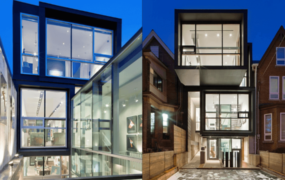The Flip Tax: Everything NYC Buyers Need To Know

At SPiRALNY, we understand that our distinguished clientele, in their quest to navigate the luxury real estate landscape of New York City, may already be familiar with the myriad taxes associated with buying, owning, and selling real estate. They may be aware of the mansion tax, transfer taxes, mortgage recording tax, and property taxes. However, one levy that often surprises many, and particularly co-op buyers, is the ‘flip tax.’ We believe it’s vital for buyers to understand flip taxes as they can considerably affect the financial dynamics of purchasing apartments in NYC.
What Exactly Is A Flip Tax in NYC?
In the NYC real estate lexicon, a flip tax is a transfer fee paid by the seller to the building. While this is more commonly seen in co-ops, a significant number of condos in NYC also impose them.
Contrary to what the term might suggest, a flip tax isn’t technically a tax, as none of it is paid to the government. Instead, the entirety of it goes to the building.
The phrase “flip tax” has its roots in the 1980s, a time when many rental buildings were undergoing conversion to co-ops. Being originally rental properties, these buildings didn’t have significant reserve funds. So, the flip tax emerged as a solution for these newly converted co-ops to build up such funds.
Original owners of these co-op units acquired them at favorable prices and, if they wished to, could “flip” their apartments for a handsome profit. The imposition of a tax on this “flip” presented an opportunity for the co-op to raise money for the building’s reserve fund and carry out necessary capital improvements without imposing an assessment on shareholders.
Over the years, existing co-ops have adopted flip taxes as a straightforward method to generate revenue.
How Is A Flip Tax Calculated?
Drawing from SPiRALNY’s random sampling of Manhattan co-ops, it’s noteworthy that the most prevalent flip tax stands at 2% of the sales price. Approximately half of all co-ops we sampled employed a 2% flip tax. Moreover, our study revealed that an overwhelming majority – nearly 90% – have some form of flip tax in place.
Based on our practical experience in the luxury real estate market, we suggest that the incidence of flip tax might be slightly overrepresented as the data sampled is voluntarily provided. However, it is undeniable that 2% is the most typical flip tax rate, and a significant proportion of co-ops implement them.
This 2% flip tax is far from trivial and can consume a considerable chunk of your capital gain.
To illustrate this, let’s say you purchase an apartment for $1,000,000 in a building with a 2% flip tax. After holding it for five years, you sell it for $1,200,000, which means you owe $24,000 for the flip tax. Sure, $24,000 may seem manageable when compared to a gain of $200,000, but one must not lose sight of other taxes. For instance, there’s the $10,000 mansion tax you paid at purchase, the $22,000 transfer tax during the sale, and potentially a mortgage recording tax as well.
It becomes evident how that ostensibly minor 2% flip tax can balloon rapidly. In this case, it accounted for 15% of your capital gain. And that’s without even factoring in a standard 5-6% broker commission!

Who Pays A Flip Tax In NYC?
In the sample taken by SPiRALNY, more than 80% of flip taxes were computed as a percentage of the sale price. However, this is not the only method used. Other calculation techniques we have observed include:
– A percentage of the owner’s capital gain
– A fixed dollar amount per share
– A declining amount depending on the duration of ownership of the apartment
Each building has the autonomy to establish its flip tax and can structure it in any way they see fit. If a building decided to set the tax based on the day of the week the apartment is sold, they would have the freedom to do so. As long as the flip tax structure is outlined in the building’s original offering plan or has been approved by the building’s owners, the tax is legally valid.
Why Do Flip Taxes Exist?
At SPiRALNY, we want to ensure that our clients have all the necessary information to navigate the luxury real estate market of New York City. One such vital aspect is understanding the expectations around who pays the flip tax.
Unless agreed upon otherwise, it is typically the seller who is expected to cover the flip tax.
However, the question of who pays isn’t as significant as it may initially seem. For instance, if a seller requests the buyer to shoulder the 2% flip tax, the buyer could simply adjust their offer by reducing it by 2% to offset this cost.
It’s important to remember that there’s no way to sidestep a flip tax. Similar to all other closing costs, it is a mandatory expense that needs to be settled for the sale to proceed.
Why Do Flip Taxes Exist?
You might wonder why flip taxes still persist today, well after the boom of co-op conversions. At SPiRALNY, we attribute this to two primary reasons.
Discouraging Flipping – Although most of the original co-op owners have sold their units by now, the act of ‘flipping’ an apartment — buying and selling it within a short period — is still a possibility. Flip taxes serve as a deterrent to such short-term ownership. They are among the numerous reasons why short-term apartment ownership in NYC may not be the most financially viable strategy.

Revenue Source – More pragmatically, buildings have no compelling reason to discontinue charging a flip tax. It’s a revenue stream that’s firmly integrated into the building’s budget. If a proposal to revoke the tax was put forth, naturally, those planning to sell in the near future would back it, but everyone else would likely oppose it. The latter group typically forms the majority. Therefore, both for theoretical and practical reasons, flip taxes are likely to remain a fixture in NYC real estate transactions.
Are Flip Taxes Good Or Bad For Property Values?
Not long ago, SPiRALNY represented a buyer in a building where a flip tax proposal was on the table. Current owners would be exempt, meaning only buyers purchasing after a specified date would be liable for it upon selling. The proposal letter sent to shareholders was emphatic:
“CURRENT OWNERS WILL NEVER BE SUBJECT TO THE ‘FLIP TAX'”
The emphasis was the original author’s. Undeniably, the letter’s author was trying to rally shareholders to approve the flip tax. While it’s technically true that current owners would be exempt, the letter didn’t address the potential impact on their property values.
If a buyer knows they will be liable for a 1% flip tax upon selling, they are, all things being equal, likely to offer 1% less for the apartment in the first place. Therefore, in SPiRALNY’s opinion, even this form of flip tax has implications for current shareholders.
In theory, a flip tax shouldn’t affect property values as the lower maintenance fees should balance it out. However, in reality, flip taxes tend to dampen property values simply because they’re an inconvenience. Buyers are not enthusiastic about learning they’ll have to pay the building for the privilege of selling their property.
Where Are Flip Taxes Disclosed?
Following queries about the sublet policy, “Does the building have a flip tax?” ranks as one of the most frequently asked questions that we at SPiRALNY receive from clients looking to invest in co-ops.
Considering the substantial amounts of money involved, it might come as a surprise that there’s no mandatory requirement for the tax to be openly advertised. While disclosure on the broker portal has become increasingly commonplace, it’s still only included in a minority of listings. Therefore, the only reliable method to ascertain this crucial detail is often by directly asking the listing agent.

Can A Flip Tax Be Good?
Though taxes are often viewed negatively, that isn’t necessarily the case with flip taxes. It’s crucial to remember that flip taxes are paid to the building, effectively subsidizing everyone’s maintenance costs.
The impact of flip taxes will vary for each building, depending on factors such as the tax amount, the number of apartment sales per year, among others. However, let’s consider a hypothetical scenario to illustrate how flip taxes can function.
Suppose a building houses 100 units and, each year, the total flip tax generated from sales within the building amounts to $100,000. This means each owner effectively avoids paying $1,000 of maintenance per year. Of course, a significant portion of this may be negated when you sell, but the longer you stay, the more a flip tax can work to your benefit.
Flip taxes were initially introduced as a practical revenue source for buildings that sorely needed it. Over time, they’ve evolved into just another revenue stream for buildings, regardless of their financial standing. Despite the debate on their merits, flip taxes are deeply ingrained in NYC real estate, and all buyers should be aware of their potential financial impact.
Disclaimer: This post is intended for informational purposes only and should not be relied upon for financial guidance. If you have any questions about your specific situation, we highly recommend consulting with a qualified accountant and/or attorney. As always, SPiRALNY, your trusted luxury brokerage in New York City, stands ready to assist you in your real estate journey, providing accurate and comprehensive information to help guide your decisions.










